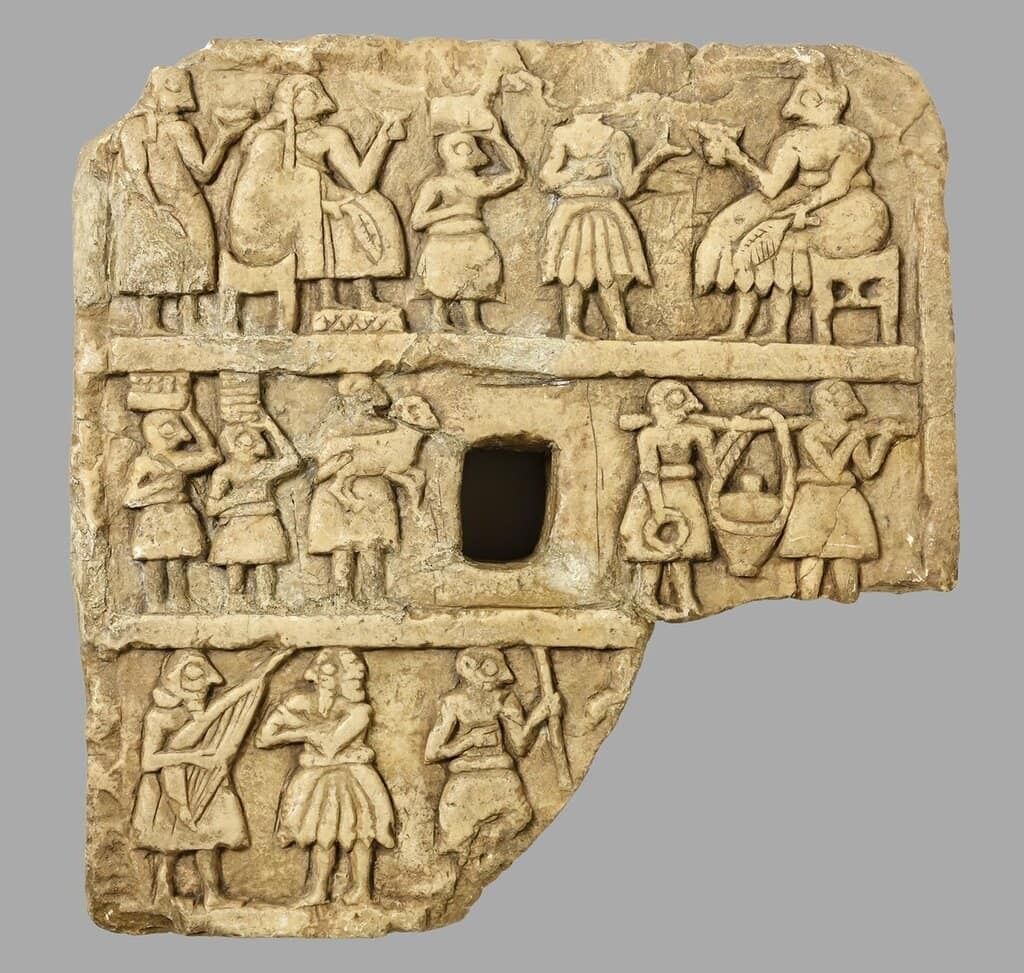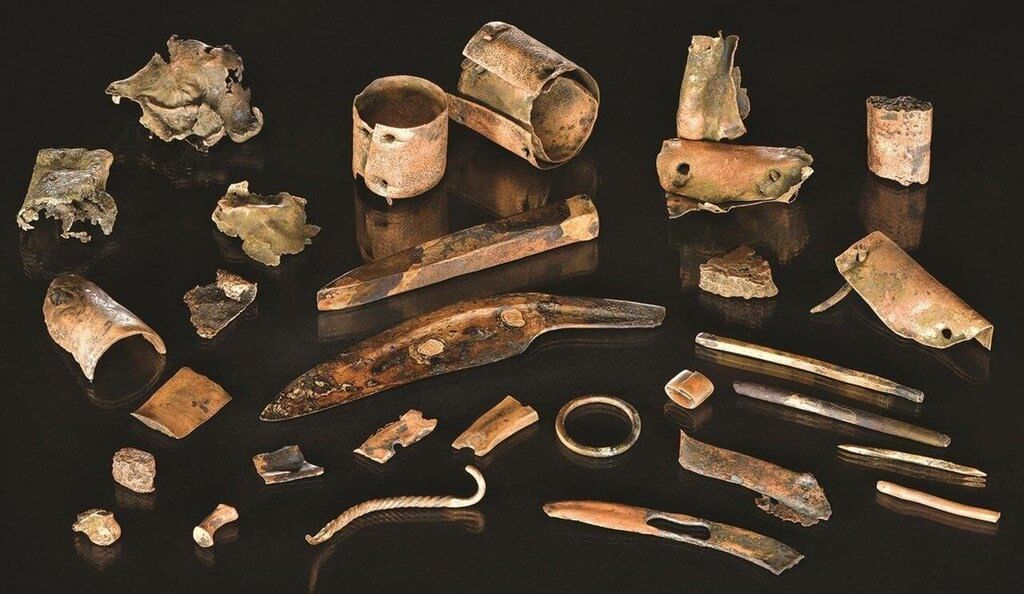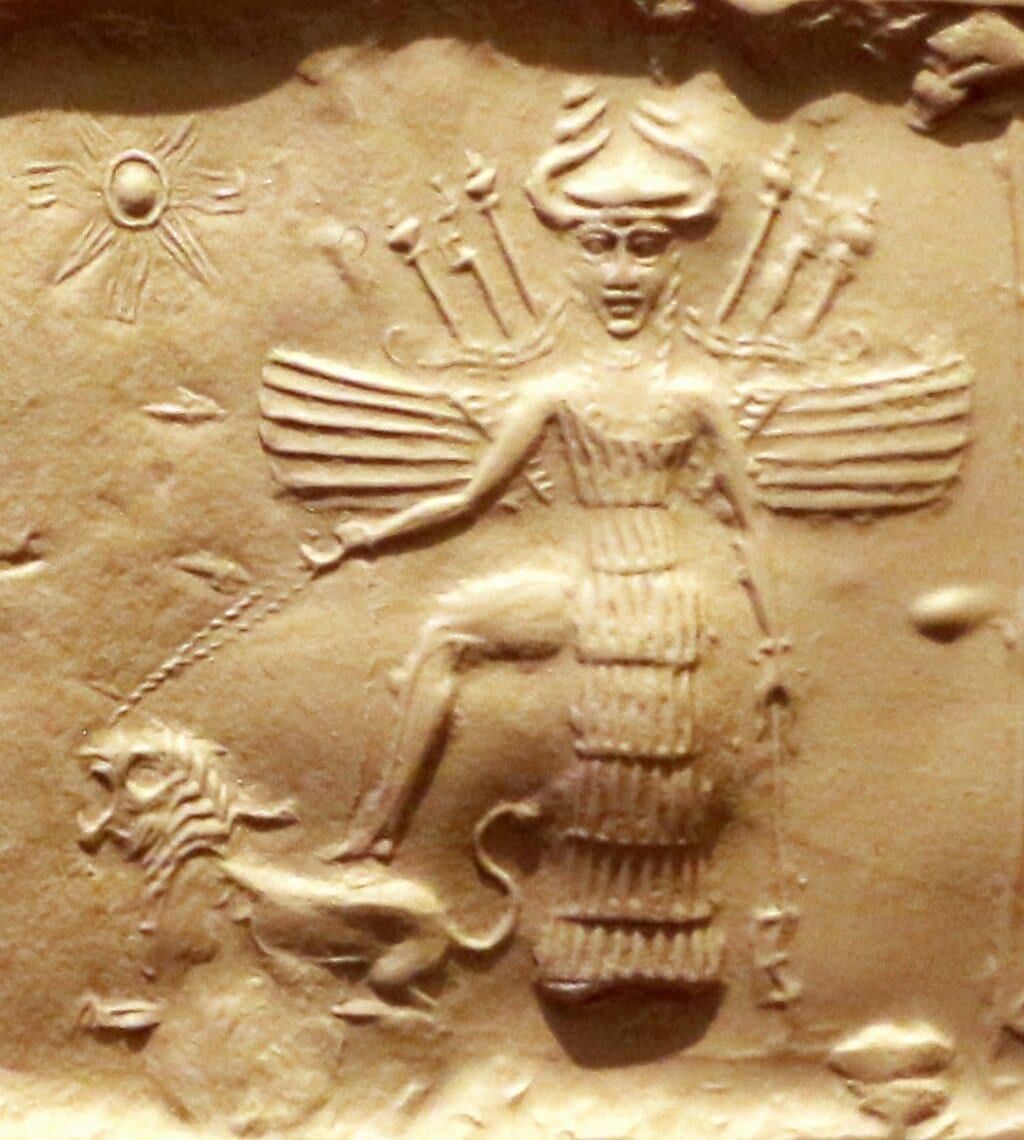Very Short Question With Answer (1 Mark Each)
Q. 1. Why was Mesopotamia important for the Europeans?
Ans. Mesopotamia was important for the Europeans because there is a mention of Mesopotamia in the Old Testament, the first part of the Bible.

Q.2. Where in Iraq, the first cities and writing emerged?
Ans. In deserted part of South, the first cities and writing emerged.
Q. 3. Of all the ancient systems, agriculture of which region was the most productive?
Ans. Agriculture of southern Mesopotamia was the most productive.
Q. 4. When the earliest cities of Mesopotamia began to develop?
Ans. In Bronze age means around 3000 B.C.E.
 Bronze AgeQ. 5. Which two metals are mixed to make the Bronze?
Bronze AgeQ. 5. Which two metals are mixed to make the Bronze?
Ans. Copper and Tin are mixed to make the Bronze.
Q. 6. In which city of Mesopotamia, the Warka Head has been found ? With which thing was it made?
Ans. The Warka Head has been found at Uruk city of Mesopotamia. It was sculpted in white marble.
Q. 7. Give two features of Urban life.
Ans. Division of Labour and Social Organisation are the two features of urban life.
Q. 8. From where the Mesopotamian people were procuring necessary metals and other goods? What did they exported for these things?
Ans. Mesopotamian people procured necessary metals and other goods from Turkey and Iran or across the Gulf. They exported cloth and agricultural products for these things.
Q. 9. What is meant by writing or script?
Ans. The meaning of writing or a script is by spoken sounds which are represented in visible signs.
Q. 10. Which thing was used as paper to write by Mesopotamian people?
Ans. Mesopotamian people used tablets of clay as paper.
Q. 11. What was the script of Mesopotamian people?
Ans. Cuneiform script was the script of Mesopotamian people.
 ScriptQ. 12. How was the word ‘Cuneiform’ derived?
ScriptQ. 12. How was the word ‘Cuneiform’ derived?
Ans. The word ‘Cuneiform’ was derived from two Latin words ‘Cuneus’ and ‘Forma’. The meaning of Cuneus is wedge and the meaning of Forma is shape.
Q. 13. Name the earliest known language of Mesopotamia.
Ans. Sumerian language was the earliest known language of Mesopotamia.
Q. 14. Which language replaced the Sumerian language after 2400 BCE?
Ans. Akkadian language replaced the Sumerian language after 2400 BCE.
Q. 15. Why were very few Mesopotamians able to read and write?
Ans. Very few Mesopotamians were able to read and write because of the following reasons:
(i) There were hundred of signs to learn.
(ii) Many of the signs were too complex to understand.
Q. 16. With which person the first event of Sumerian trade is associated?
Ans. The ancient ruler of Uruk City, Enmerkar.
Q. 17. Which three types of cities developed in Southern Mesopotamia?
Ans. (i) Cities developed around temples.
(ii) Cities developed as centres of trade.
(iii) Imperial cities.
Q. 18. Name two Gods-Goddesses of Mesopotamia.
Ans. (i) The Moon God of Ur
(ii) Inana, the Goddess of Love and War.
 God of Mesoptamia
God of Mesoptamia
Q. 19. Write one difference between ancient temples and houses of Mesopotamia.
Ans. Ancient temples always had their outer walls going in and out at regular intervals but ordinary houses did not have such a characteristic.
Q. 20. Which water way of
Ans. Euphrates water way worked as a world route for trade.
Short Question With Answer (2 Mark Each)
Q. 1. What does the story of the flood mentioned in the Bible tell?
Ans. According to the Bible, flood hit the earth in ancient times which was meant to destroy life on the earth. It is also called as the Great Flood. But God wanted to maintain life on the earth. He chose a man, Noah, to ensure that life could continue even after the flood. Noah built a huge boat or ark. He took one pair of all known species of animals and birds on board the ark. All of these survived the flood. Rest of the others were destroyed.
Q. 2. Iraq is a land of geographical diversities. Explain with examples.
Ans. Iraq is in fact a land of geographical diversities :
(i) Green undulating plains lie in the north east of the country. These plains gradually rise to tree covered mountain ranges. Clear streams and wild flowers are found here. These plains experience enough rainfall to grow crops.
(ii) There is a stretch of upland in the north which is known as steppe. Here, animal rearing is the main source of livelihood. After the winter rains, goats and sheep feed on the grasses and low shrubs which grow here.
(iii) In the east direction, tributaries of the river Tigris provide routes of communication into the mountains of Iran.
(iv) Southern part of the country is a desert.
Q. 3. What is the importance of division of labour in urban life?
Or
Division of labour is one of the important features of urban life. Explain it with example.
Ans. The meaning of division of labour is to fulfil our needs with each other’s products and services.
The division of labour is very much necessary for urban life. The reason is that besides food production, trade, manufactures and several types of services also play an important role in urban economies. But city people are not self-sufficient. They depend on the products and services of other city or village people.
There is continued interaction between the urban people and the village people. For example, the carver of a stone seal needs bronze tools which he himself cannot make. He does not even know from where to get coloured stones for the seals. He is specialised in carving, not trading. The bronze tool maker will definitely go out himself to get the metals—tin and copper. All these functions are performed with each other’s help.Q. 4. Why must there be a social organisation in urban economy ?
Ans. There must be a social organisation in urban economy because of the given ahead reasons:
(i) Metal, fuel, wood, different stones, etc., came from many different places for city manufacturers.
So the organised trade and storage were required.
(ii) Grain and other food items are delivered from the village to the city. So these things are required to be stored and distributed.
(iii) Except this, it is necessary to maintain coordination among different activities. For example, stone and bronze tools and pots must be available for seal cutters.
(iv) Urban economies generally require the keeping of written records.
All these functions are performed through commands and obedience of the command. So there must be a social organisation in the urban economy.
Q. 5. Write a note on imports and exports of Mesopotamia.
Ans. Mesopotamia was quite rich in food resources but there was lack of mineral resources over there.
No stones were available for tools, seals and jewels in most parts of the South. The wood of the poplar trees and date palm trees of Iraq was not good for boats, carts and cartwheels. No metals were available for vessels, tools or ornaments. That is why ancient Mesopotamian people could have exported their agricultural produce and abundant textiles and imported copper, wood, silver, gold, tin, shell and different type of stones. This trade was taking place with Turkey, Iran or across the Gulf. These regions were rich in mineral resources but very less scope of agriculture was there in those regions. So, Mesopotamia exported clothes and agricultural products to these countries in exchange of the items that came to her. Regular exchanges were possible only when there was a social organisation. Such organisation was initiated by Mesopotamians.
Q. 6. How did the art of writing develop in Mesopotamia ?
Ans. The signs fixed for writing spoken sounds are called a script. Mesopotamians too had their own script. They began to write when society needed to keep records of transactions, because in city life, transactions occurred at different times and involved many people and a variety of goods.
Around 3200 BCE, the first Mesopotamian tablets were written. These tablets contained picture-like signs and numbers. Lists of around 5,000 oxen, fish, bread, etc., have been found. These lists are probably of goods which were brought into or distributed from the temples of Uruk, a city in the south.
Q. 7. Which changes came in Mesopotamian writing and language from 2600 BCE to the first century CE ?
Ans. From 2600 BCE to the first century CE, Mesopotamian writing and language experienced the following changes:
(i) By 2600 BCE or so, letters in Mesopotamia became cuneiform. Sumerian was the language of writing. There was not a single consonant or vowel in the sound that a cuneiform sign represented but syllables were there. Thus, a Mesopotamian scribe had to learn hundreds of signs. He was required to be able to handle a wet tablet and get it written before it dried. So writing was a skilled craft.
(ii) Writing was now used for keeping records, giving legal validity to land transfers, making dictionaries, narrating the deeds of kings and announcing the changes which a king wanted to make in the customary laws of the land.
(iii) After 2400 BCE Sumerian language was gradually replaced by Akkadian language. For more than 2,000 years or upto first century CE, the cuneiform writing in the Akkadian language continued to be in use.
Q. 8. “Agriculture in South Mesopotamia was sometimes subject to hazards.” Which factors were responsible for it ?
Ans. Inspite of natural fertility, agriculture in South Mesopotamia was sometimes subject to hazards. Both natural and man-made factors were responsible for it:
(a) Natural Factors.
(i) Sometimes the natural outlet channels of the Euphrates were flooded with water which led to destruction of crops.
(ii) Sometimes the outlet channels of the Euphrates would change their course altogether. Consequently the fields would dry up.
(b) Man-made Factors.
(i) Sometimes people living on the upstream stretches of a channel could divert too much water into their fields and villages down stream were left without water.
(ii) People living on the upstream stretches of a channel could neglect to clean out the silt from their stretch of the channel, consequently, the flow of water would block further down and villages downstream were left without water.
Q. 9. Give brief description of technical advances which took place at Uruk around 3000 BCE.
Ans. Many technical advances took place at Uruk around 3000 BCE. The rulers commanded people to carry stones or metal ores, to come and make bricks, to lay the bricks for a temple or to go to another country to bring suitable materials. That is why Uruk made great technical advances.
(i) Craftsmen began to use Bronze tools for different crafts.
(ii) As there was non availability of suitable wood to bear the weight of the roof of large halls, architects learnt to construct brick columns.
(iii) Hundreds of people were ordered to work at making and baking clay cones. Different coloured printed cones were pushed into temple walls which created a colourful mosaic.
(iv) There were great achievements in the field of sculpture. Imported stones were mainly used to built the sculptures.
(v) Potter’s wheel was one of the other advancement in technical sphere. It enabled a potter’s workshop to produce a number of similar pots at a time.
Q. 10. Give brief description of making of seals in Mesopotamia and their importance.
Ans. In Mesopotamia, until the end of 1000 BCE, cylindrical stone seals began to be made. These seals were pierced down at the centre. A stick was fitted at the centre and was rolled over wet clay. In this way continuous pictures were created. Seals were carved out by skilled craftsmen. Sometimes these seals were carrying the name of the owner, his god, his official position, etc. A seal could be rolled on clay covering the string knot of a cloth package or the mouth of a pot so that the contents could be saved.
When rolled on a letter written on a clay tablet it then became a mark of authenticity. In this way, seal was the mark of a city dweller’s role in public life.

 Bronze AgeQ. 5. Which two metals are mixed to make the Bronze?
Bronze AgeQ. 5. Which two metals are mixed to make the Bronze? ScriptQ. 12. How was the word ‘Cuneiform’ derived?
ScriptQ. 12. How was the word ‘Cuneiform’ derived? God of Mesoptamia
God of Mesoptamia


























